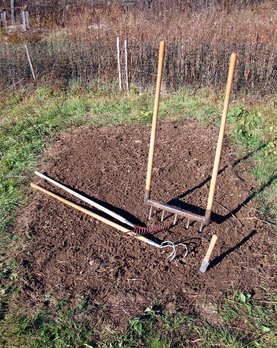 As you can imagine, on my scythe-based farm, I don't use roto-tillers either. I have heavy clay soil here. If I need to work the soil under a mulched garden bed, I use the tools pictured on the right. First, I remove the mulch. Then I sprinkle on soil amendments (minerals, bio-char and compost.) Next, I loosen the bed with my Gulland Forge broadfork. Then I use the Japanese garden knife to dig out any deep rooted weeds, like thistles, dandelion, and burdock. I then work the amendments into the soil with a 3-tine cultivator. I like this Swiss made one from Johnnies. Next, I rake the bed smooth for the seeds with a garden rake with short teeth. 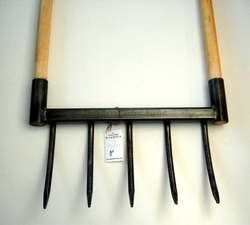 I love the superior quality and craftsmanship of my Gulland Forge Broadfork. It was made for me by my friend Larry Cooper. They are available at http://gullandforge.com/ I took some pictures of it when it was brand new a few years ago. It's when working hard ever since. I took excellent care of it, but then loaned it to a friend who, had a high-tunnel hoop-house, one winter, and it came back looking like it had been left in the rain for a month (see first picture in this article). Larry says that a light sanding and some linseed oil and turpentine, will spruce it up good as new. Unfortunately I haven't had time to do that yet. Larry made this tool so that every element of it can be easily repaired or replaced. It's amazingly well designed and constructed. Check out the close-up photos below. Even if something does wear out or fail, probably due to abuse, it can be repaired. This tool is made to be a good, long-term investment. It's not going to end up on a scrap heap, someday.  After the seeds are planted, I then add a thin layer of mulch. The mulch pictured on right is dried hay that I made from mowing my lawn. Short fibers; no seeds. The short stems makes it easy to spread it out in a layer thin enough for seedlings to grow through, yet thick enough to keep the soil moist for germination, and protected to prevent wash-out, erosion, and splattering from heavy rains. It protects the soil, while the seedlings can easily come up through it. A scythe lets you do something useful with your lawn. Let the grass grow a little taller, then mow it with a scythe, and turn the cut grass into hay for mulching your garden beds.
3 Comments
Rick Scarlet
6/6/2013 06:49:44 am
I really like my broadfork too! We have our soil soft enough that it is really easy too dig a pretty big area in not much time. We really enjoy your website and blog. See you in a few weeks.
Reply
earl sluder
6/17/2013 04:18:35 am
In the picture of the broadfork there is what looks to be a patch of dead rag weed. what type of blade would you use to cut this? I have one of your scythe with a 75cm hay blade on it an it works great on most things but I have patches of weeds an saplings I need to cut from time to time.can you help me? thank you. EARL
Reply
BOTAN ANDERSON
12/5/2013 03:16:06 am
Hi Earl- While ragweed abounds on my farm, what you see on the other side of the fence is goldenrods, asters, and young bushes. I use my Fux 50cm light bush blade for that. I recently made a video of how to mow these goldenrods and brush with it. Check it out on my website and YouTube channel.
Reply
Your comment will be posted after it is approved.
Leave a Reply. |
Botan AndersonArchives
March 2023
Categories
All
|
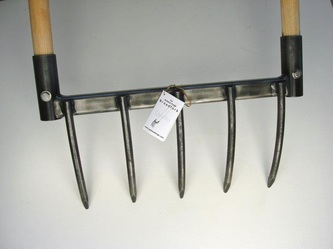
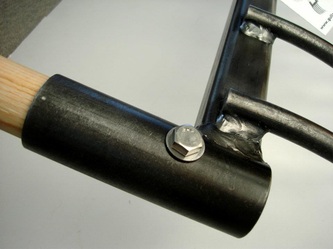
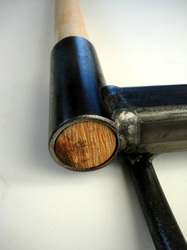
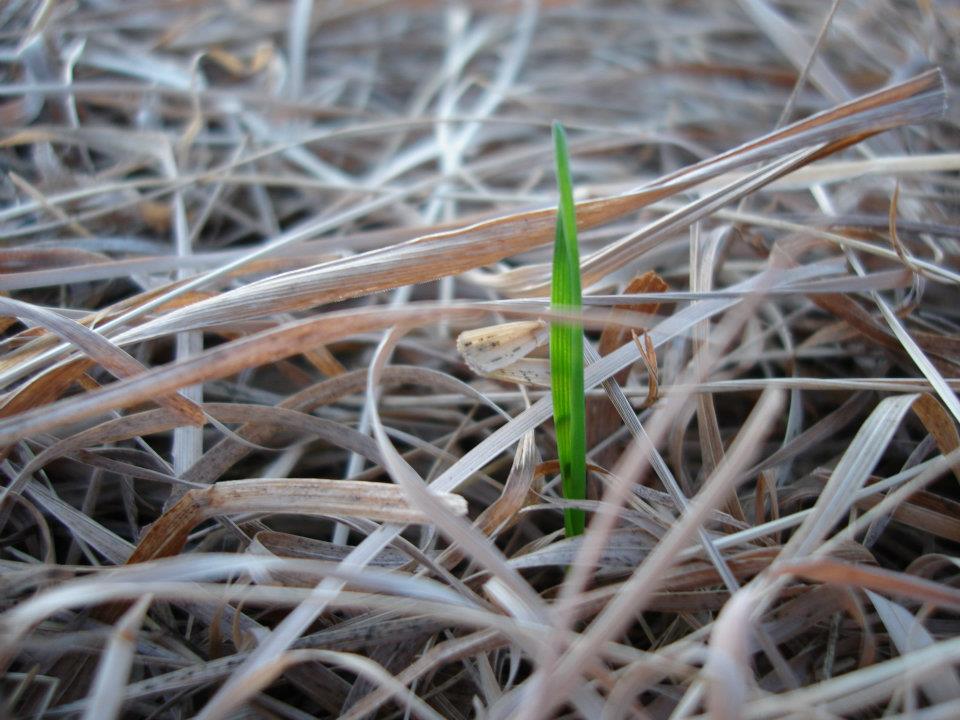
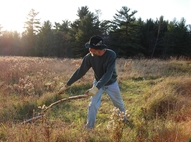
 RSS Feed
RSS Feed